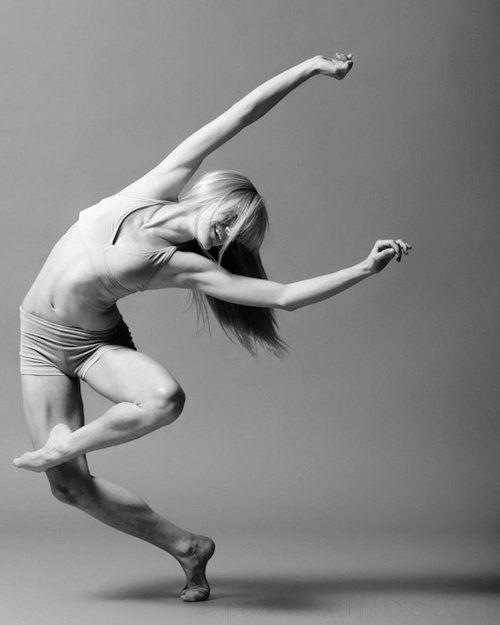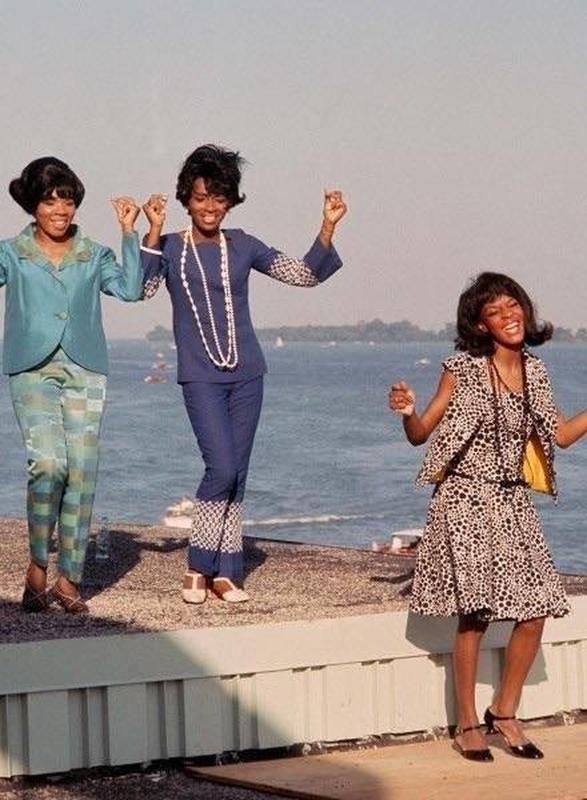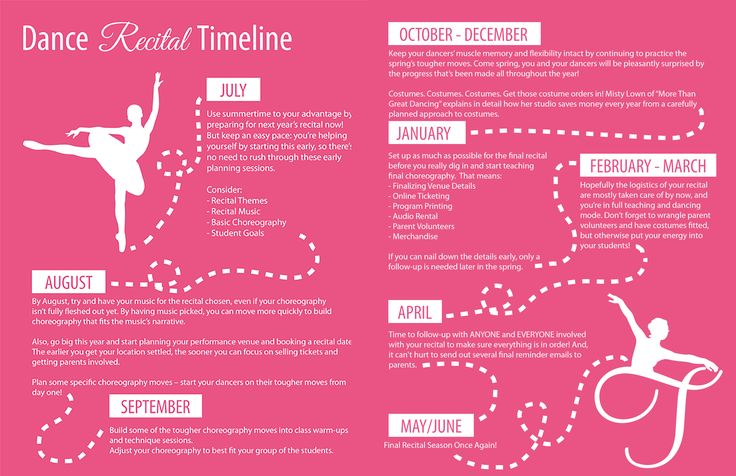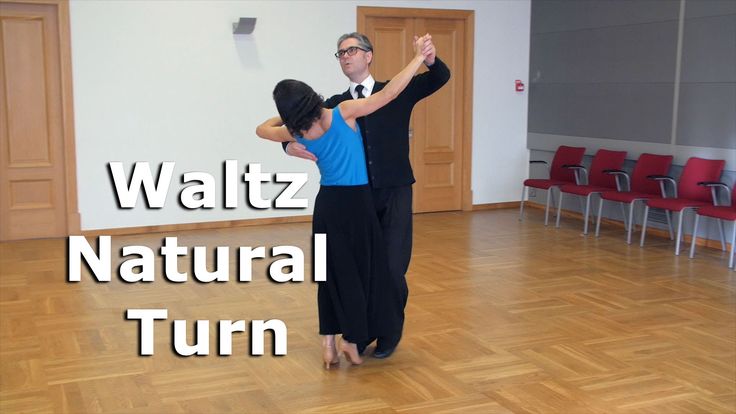How to spin a girl dance
Super spinning tips and how to turn better in dance -
Lots of teachers (and other advanced dancers) get annoyed by non-teachers trying to teach people how to dance. I’m not going to do this, because if you want to dance well and improve it’s about getting good basic dance lessons, and practice.
But so many people struggle to spin and haven’t ever been taught. Here are the tips I was given via different teachers through the years. Tips from 13 years of ballet classes and 2.5 years of salsa where we were taught turning and spinning drills from a Guinness world record holder for spinning.
Hopefully some of these spinning tips will help you in both turning and spinning better as you dance.
1. Know the difference between a spin and a turn
A turn is stepping as you rotate, in modern jive that’s usually via a ‘return’ or travelling return. A spin should be on one foot and can be a free spin or aided by the leader.
2. Learn to spot
If you get dizzy when spinning, learning to spot is essential. It’s all about practice so that you’ll do it automatically. Essentially you’re leaving your eyes looking at one spot in front of you as your body turns, then when you can’t leave your head behind anymore, you whip your head around so your eyes are looking back at your spot again as the rest of your body follows. You can start slowly and build it up. This video is a simple beginner technique for starting out.
There’re plenty of YouTube tutorials and guidance on how to spot while spinning, and it does help reduce dizziness especially during multiple splns. I find spinning is easier than continuous turning in one direction because spotting is easier when you’re preparing to spin in one place.
3. Spin and turn on one foot
To spin you need as small an area as possible on the floor. Using two feet will act as a brake and make you unable to turn.
4. Turn on the ball of your foot
I’m naughty at this because I do get lazy and tend to relax into my heel when I turn, but you should be turning on the ball of your foot. Your heel needs to only be slightly off the floor. But having your weight over the front of your foot will keep your body in the right place for turning without wobbling off in a different direction.
5. Don’t lift your spare foot up
When spinning, sometimes you see people lift their spare foot in the air (usually, bending at the knee, I presume it’s a natural reflex or they want to keep the spare foot out of the way). This will make you wobble and can also catch your partner or anyone else dancing closely. When doing a basic spin, you want to keep your spare foot next to your anchored foot, just above the floor. This keeps your body centred over your legs and should help keep you upright. It’s much hard spinning with one leg raised.
It’s much hard spinning with one leg raised.
6. Think down into the ground, not up in the air
Lots of dancers lift up when trying to spin. This could be because they’ve done ballet in the past which is about pirouetting on your toes in a releve position. But it’s more likely that we often turn under the leader’s and our raised hand, so the body tends to follow upwards as well.
Yes, you need to straighten out your body and think open rather than tight and leaning over, but if you keep your knees slightly bent and think about drilling into the floor, you’ll be more balanced and grounded. It will certainly suit a more grounded dance than one like ballet which is much lighter and in the air. You’ll also move less when you’re spinning.
It’s hard to explain. But if you’ve done any latin dancing or salsa, where you need to feel the floor through your feet to get the right hip action, the grounding and turning into the floor rather than upwards, is the same sensation.
7. Have good posture
To spin well, you need to engage your core. You need to stay relaxed and not tense up your shoulders, pull your tummy in and tuck your bottom under.
Then keep your arms in a suitable position. The easiest position for a free spin is to bring your arms towards each other in front of you, at chest level, in an oval shape. Bringing one arm to join the first helps with impetous in a spin, but also keeps posture and position right. Oh and flailing arms isn’t a good look.
This clip shows a comfortable arm position and the posture needed (salsa – they do a lot more spin technique than modern jive! but you can still get tips on arm, body and foot position)
8.
 Don’t look down
Don’t look downIf you look down your weight balance will move and you’ll be more likely to fall. Look straight ahead for a steadier turn (or spot if you use that technique).
9. Don’t rush
So many people panic when they have to spin and try and go whooshing off really fast. But if you’re spinning or turning to music, you want to fill the beats you’re spinning on. If it’s a slow track, you’ll have longer to do one rotation. There’s no point whizzing round to find there’s still half the beat left to go.
10. Practice
It’s all about practice. Start with a single spin, and work up to multiple spins if you want. If you can do free spins yourself, it’s easier to then be led into aided multiple spins or turns. This clip shows the use of a clock method (admittedly for salsa spins with the prep, but the idea is the same for modern jive).
Tips for leaders
Most spinning is done by the follower, but these all apply to leaders as well. Plus if you’re prepping your partner for a spin, there’s things to be aware of.
Plus if you’re prepping your partner for a spin, there’s things to be aware of.
Don’t ever force the follower into a spin. You can prep for one (either raising the arm or prepping the follow for a free spin), but only they can do the spin.
Ensure your prep is accurate. If it’s a free spin, don’t prep the spin too far out from the follower’s centre, otherwise they will be off balance and the spin won’t work. If it’s an aided spin, raising your hand and the follower’s, to just above and in front of the follower’s head. Not really high above their head otherwise they’ll struggle to keep connection. And not below the top of their head otherwise they’ll have to duck which is a totally different move.
Own your spin
[bctt tweet=”The person spinning should always be the one in control of the spin ” username=”whatabout_dance”]
A final point to remember is that you don’t have to do multiple spins. Yes sometimes it’s nice to throw some in if the situation is right and the music calls for it.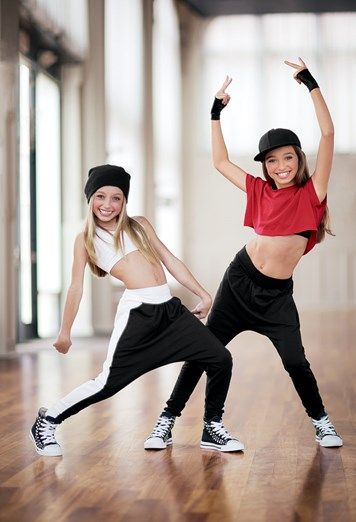 For example, I can do a double or triple (when I’ve been practising for a while), but I rarely do more than a single in freestyle. Because I’d rather have an immaculate single spin than try a multiple spin when the lead or prep doesn’t feel right, or the floor isn’t smooth enough. I’ve never had a leader moan that I’ve refused to do a double when he’s led that. I’ve usually had people compliment me on my spins.
For example, I can do a double or triple (when I’ve been practising for a while), but I rarely do more than a single in freestyle. Because I’d rather have an immaculate single spin than try a multiple spin when the lead or prep doesn’t feel right, or the floor isn’t smooth enough. I’ve never had a leader moan that I’ve refused to do a double when he’s led that. I’ve usually had people compliment me on my spins.
How do you get on with spinning? How were you taught?
Like this:
Like Loading...
How to Spin Properly
Spinning takes training, time, education, mental determination, and LOTS of practice.
When you spin you must have the following:
1) Have and Maintain a Positive Mental Attitude
2) Whip upper body, starting with your shoulders around as fast as possible.
3) Bend your knees slightly to ground yourself.
4) Stay on both balls of your feet.
5) Make sure your back is straight. Maintain a good posture.
6) Use both feet as you spin
7) Your Free arm needs to be in front of your chest, palm facing down.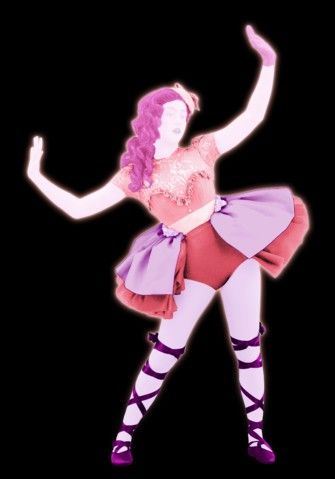
8) Make sure you apply the L technique, Keeping the arm that the guy is holding firm and steady in an L-shape in front of your face.
9) Hold your own weight and balance and do not depend on the guy to hold you up.
Let’s talk about all this.
1) Maintain a Positive Mental Attitude
First and foremost, you’re never going to be able to spin, and spin well, if you think you can’t, or if you think it’s too hard. I’ve trained countless women who honestly thought they could never do spins by using these simple techniques. From the skinniest, to the most overweight, both men and women of any size can spin. It’s just a matter of proper training, and the right attitude. You must convince yourself in your mind FIRST that it actually is possible to spin, and spin very well. Remember, the object is to get yourself around, and complete the move. Keep the goal in mind, (which to some, is to actually be standing afterward!), and you’ll be able to do it. The gray-matter between your ears will get you around. Read on, and I will teach you the tricks and tips on how to spin fast and very controlled..
Read on, and I will teach you the tricks and tips on how to spin fast and very controlled..
2) Whipping your shoulders around as fast as possible
It’s not your feet that spin you, it’s not your head, it’s not your arms, and it’s not your legs. It’s your SHOULDERS that gain the momentum. I learned this from my very good friend and instructor, Mr. Joe Cassini. When you turn your shoulders, the rest of your body follows, and stays more balanced during the spin.
3) Bending your knees
People, if you spin with straight legs, you’re going to tilt, tumble, and then crash like a great tree in a forest. When spinning on your own, or if a guy is spinning you, it is important to have a springy “bend-in-the knees, shock-absorbing”, type of posture like you’re about ready to squat in the bathroom (sorry to be so graphic, but I’m now sure you can picture EXACTLY what I’m trying to convey). This will lower your body weight to the floor, so you can be more “grounded” and stable during the spin. This must be done with correct posture, and a very straight back. Do not bend over! Maintaining this type of “pose” per se, is essential for balance and sold controlled spins.
This must be done with correct posture, and a very straight back. Do not bend over! Maintaining this type of “pose” per se, is essential for balance and sold controlled spins.
4) Staying on both balls of your feet
Simple. If you’re doing multiple spins, you want your legs and feet TOGETHER. Do not cross your legs, or try to step over your feet — especially during a fast multiple spin. Crossing your feet will only tangle up your legs, and you’ll end up looking like a cow being roped in a rodeo. We all know where they end up! ON THE GROUND!
5) Maintaining a straight back (good posture)
having great posture not only looks good, but also is very essential in keeping balance and control during multiple spins. I wrote an entire article about posture several years ago. it’s still solid information, and has proven itself over and over again to be the fascinating, plain and simple truth. I still hand it out during my Ladies Styling Classes, so Read it!
6) Dragging your feet
The more you drag your feet, the more balance you’ll feel. If you’re closer to the ground, you won’t fall over. I train my ladies to drag their feet, even during basic and cross-body leads. I teach them to feel the balls of their feet dragging. Try it.
If you’re closer to the ground, you won’t fall over. I train my ladies to drag their feet, even during basic and cross-body leads. I teach them to feel the balls of their feet dragging. Try it.
I learned this technique while at the Mayan in Los Angeles one night. The floor was so crowded with people, it was almost impossible to dance without crashing into someone. I kept stepping on dancers around me. I kept saying, “I’m sorry…, Oops! I’m sorry, oh gees, I’m really sorry..” over and over, to everyone around me, because I kept stepping on them! I finally got so frustrated, that I decided to not pick up my feet AT ALL the rest of the evening. I didn’t want everyone to hate me, so I just “stayed low”, and drug my feet the rest of the night.
Amazingly, the minute I started dragging the balls of my feet, my balance improved, and I could dance better! My partner complimented how I didn’t feel so heavy anymore, and said he felt like I was “holding my own weight” instead of hanging on him! I was in shock. I had actually found the secret to maintaining balance and excellent control on the dance floor.
I had actually found the secret to maintaining balance and excellent control on the dance floor.
I’ve been dragging my feet ever since, and my dancing has improved TREMENDOUSLY!
7) Free arm in front of your stomach, palm facing down
I learned this technique from my friend, and instructor, Josie Neglia. If you maintain your arm position in front of you, by your stomach, with your palm facing down, it will be as though your arm is on a table, maintaining more balance. DO NOT put your hand behind your back or on your hip during multiple spins. This looks AWFUL!!!
8) Keeping the arm the guy is holding firm like a rock and in an L-shape in front of your face
I learned this in New York a few years ago. Ladies, during multiple spins, and even during single, or double spins, if you keep your arm in front of your nose, and strong and sturdy like a rock, you’ll not only spin faster, but will not risk screwing up your shoulder or collar bone from poorly-executed spins from men (sorry guys, but some of you need to get some training not only on how to properly spin a woman, but how to stop her after her spins. Look up your local instructors in our City guides section, or order my Cool Moves© video series to get some ideas of how to spin, and stop a woman properly.
Look up your local instructors in our City guides section, or order my Cool Moves© video series to get some ideas of how to spin, and stop a woman properly.
9) Don’t depend on the guy to hold you up
If he accidentally lets go of me during a multiple spin (due to sweaty palms, improper hold, or finger cramping), I’ll keep spinning as if he was there, and simply wait for him to pick me up again with his other hand if he wants. (I won’t stop spinning on purpose, just to stun him.. Gees, I’m such a ham!!)
Ladies, NEVER pull down on the guy’s hand or thumb to hold you up during a single or multiple spin. If you do this, he’ll never want to try it again! Don’t hang on to his hand for dear life. If he spins you, do everything I told you above — that includes holding your own weight. You can never, ever depend on a man to keep you in balance, control you, or hold you up out there. You must be able to do it on your own. This will put less pressure on the both of you.
Overall, remember that both of you are supposed to be having FUN dancing together.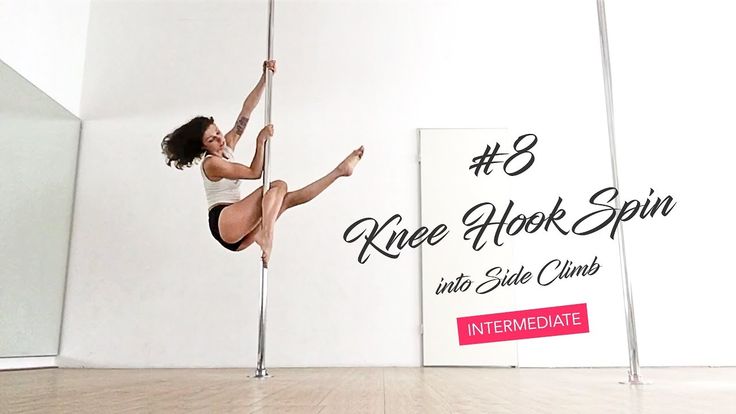 If you put stress on your partner in any way, dancing with you will not be an enjoyable experience. I’ve seen men pass up absolutely gorgeous women for the more homely-type, simply because they’re better, more stable dancers.
If you put stress on your partner in any way, dancing with you will not be an enjoyable experience. I’ve seen men pass up absolutely gorgeous women for the more homely-type, simply because they’re better, more stable dancers.
“Yea, she’s a knock-out, but can’t turn if you paid her. I’m sorry, but I’d rather dance with someone who CAN DANCE.”…men tell me. What does this mean? There’s actually HOPE for those of us with the not-so-knock-out figures and looks! I’ve seen it happen over and over again. Homely-looking women who try harder than anyone else to keep balanced and dance well. They work hard at their craft, and eventually end up dancing all night long! Meantime, their more beautiful sisters wait out along the sidelines, and end up dancing with the more amateur beer-drinking types. It’s a pity they don’t read Salsa web.
Face it, if you can’t dance well, you won’t get asked to dance much. That’s a fact.
Listen, YOU CAN BE OBESE, but if you know how to dance, you’ll be out on the dance floor ALL NIGHT LONG.
I’ve seen it happen, first-hand.
Ladies, it is your responsibility, no matter what level he is, to make your partner feel very comfortable spinning and dancing with you. It is your responsibility to make the both of you look fabulous out there. By applying the techniques I’ve stated above, you’ll be on your way to becoming a fabulous spinner.
By applying the techniques I’ve stated above,
you’ll be well on your way to becoming a FABULOUS spinner
Article By Edie, The Salsa Freak
Are you ready to start dancing? check out STEP N DANCE for Salsa & Bachata Dance Classes
Dance Spins - Technique Recommendations
Everyone involved in dancing (and especially in such styles as salsa, rumba, Argentine tango, etc.) will be interested to know some of the subtleties and secrets of dance steps. This is especially true for such a complex element as rotation. Let's talk about how to rotate the partner correctly so that she does not fall and fly away)). And the girls will be interested to know: how to keep up with the rotations and at the same time look great in the dance. Of course, we are not talking about single turns here, but about double, triple and more.
And the girls will be interested to know: how to keep up with the rotations and at the same time look great in the dance. Of course, we are not talking about single turns here, but about double, triple and more.
Spinning and spinning
As a rule, girls are very fond of showing off their ability to dance cool. And if she's really good at spinning, you can be sure that your partner can't wait for you to spin her.
You can even say this: all the girls (regarding the rotations in the dance) are divided into 2 categories - those who can and love to spin, and those who love, but have not yet learned.
That is why, while dancing with a familiar partner, if you know that she easily makes a double turn, try spinning her a third time. Don't stop there.
However, do not overdo it with rotations. It is not recommended for beginners to rotate strongly, since falls very often lead to injuries. The number of turns is an indicator of the level of the couple, and the absence of falls is an indicator of the level of the partner.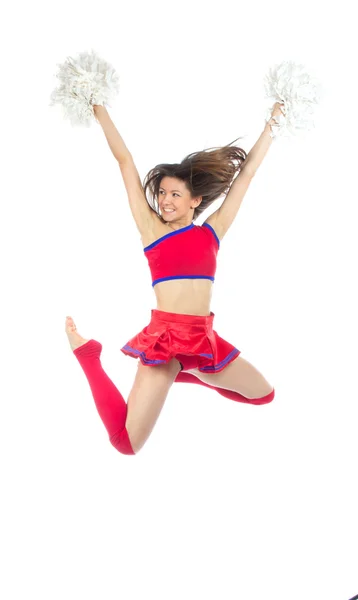
Turning Technique and Leading (partner)
- Pay close attention to what is happening around you. This is especially true during the disco, where you can often meet a lot of tipsy personalities. If they crowd near your couple, it is better to move away.
- Observe the lady's stability before, during and after the turn. If it starts to drift, then most likely the problem is in it. In this case, the number and intensity of turns should be reduced. However, if experienced partners lose stability while dancing with you, then most likely it is you. And most importantly, if the partner starts to fall, catch her, by all means!
- Be sure to consider the music tempo. There must be at least one or two scores for each turn.
- 70% of success depends on the preparation for the turn, and therefore this movement should be prepared with great care.
- Calculate in advance the number of turns performed by the partner.
 There is nothing worse than a partner who is not confident in himself and his plans.
There is nothing worse than a partner who is not confident in himself and his plans. - Be serious about completing the turn. When completing the movement, let your partner know that this turn is the last. Lower her hand in time so that the girl does not skid.
- Let your partner rest before performing the following movements. Do not immediately start entering the cycle of the next complex figures, as the girl may lose her balance. Let her catch her breath, do a basic or hug her without stopping the dance. Your partner will appreciate your care.
Unity in the Karaite dance. Ensemble "Birlik", or "one big family"
In the Karaite school, located in Trakai next to the kenesa, young people grab empty hangers in the hallway and start dancing. The "Birlik" ensemble is in full swing - the young men practice saber dance, and plastic hangers replace the sabers with which they dance during the concert.
© DELFI
"The sabers, though wooden, look like real ones. Once we went on tour to Turkey, we were afraid that they wouldn't let us in with them," laughs Inna Lavrynovych, head of the Birlik ensemble. But, fortunately, then everything ended well.
Once we went on tour to Turkey, we were afraid that they wouldn't let us in with them," laughs Inna Lavrynovych, head of the Birlik ensemble. But, fortunately, then everything ended well.
© Ensemble archive
You go first and lead
Inna has been leading the ensemble from the very beginning. "Birlik" is her first team, and, according to her, it has developed by itself. “I didn’t plan to become the head of the ensemble at all, I just had to have someone spin this whole thing. In 2010, we just had a group of children from Karaite families, all about eight to ten years old, including my son. Everyone had to do something." In addition, Inna wanted the children from Karaite families to know each other - to communicate and be friends, so that their connection through creativity, joint holidays and performances would preserve the Karaite community.
So, Inna, an engineer-economist by profession, suddenly got a new line of work. However, not so unexpected: Inna graduated from a seven-year music school as a child.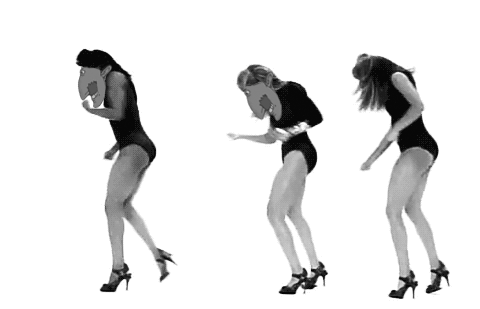 “Music is always in me, but it was only then that I encountered dancing,” Inna explains.
“Music is always in me, but it was only then that I encountered dancing,” Inna explains.
At that moment, the Karaite community already had a dance group "Sandugach", which in Karaite means "Nightingale". But its members grew up, and it turned out to be a difficult task to group younger schoolchildren with them. The classes did not add up, and it became clear what was needed create a new team
© DELFI
This is how "Birlik" appeared, the name of which is translated as "unity" ("bir" in Karaite means "one"). “They started to lead together with one mother, but she subsequently moved away. And I realized that I couldn’t quit what I started. As I say, first you go first and lead, then someone starts pushing you. You straighten up and go forward - I have to go! So while I'm going," says Inna.
Difficulties in growing
According to her, there was no selection for the team, everyone was taken - "everyone who wanted to come, and those whom the parents decided to bring. "
"
There were no problems with the repertoire. "We take all the music from Crimea," Inna clarifies. "Birlik" inherited the archives of the "Dostlar" collective, which in turn used the materials of the Karaite ensemble "Fidan", which is based in the Crimea. By the way, "Dostlar" in translation from Karaim means "Friends".
After one of the first performances, Taisiya Firkovich joined the band. Now she is 19 years old, and this summer she graduated from the Sofia Kovalevskaya school in Vilnius. Taya, as her friends and colleagues in the team call her briefly, says that she remembers little from her childhood, but the moment she was accepted into the team is one of the most vivid memories in her life.
© DELFI
"I saw how they dance and wanted to join. What struck me the most was the movements and music, I was surprised how diverse they can be among us Karaites. I had gone to dances before, but here it was perfect a special aura,” recalls Taya. “I asked my dad to talk to the leader.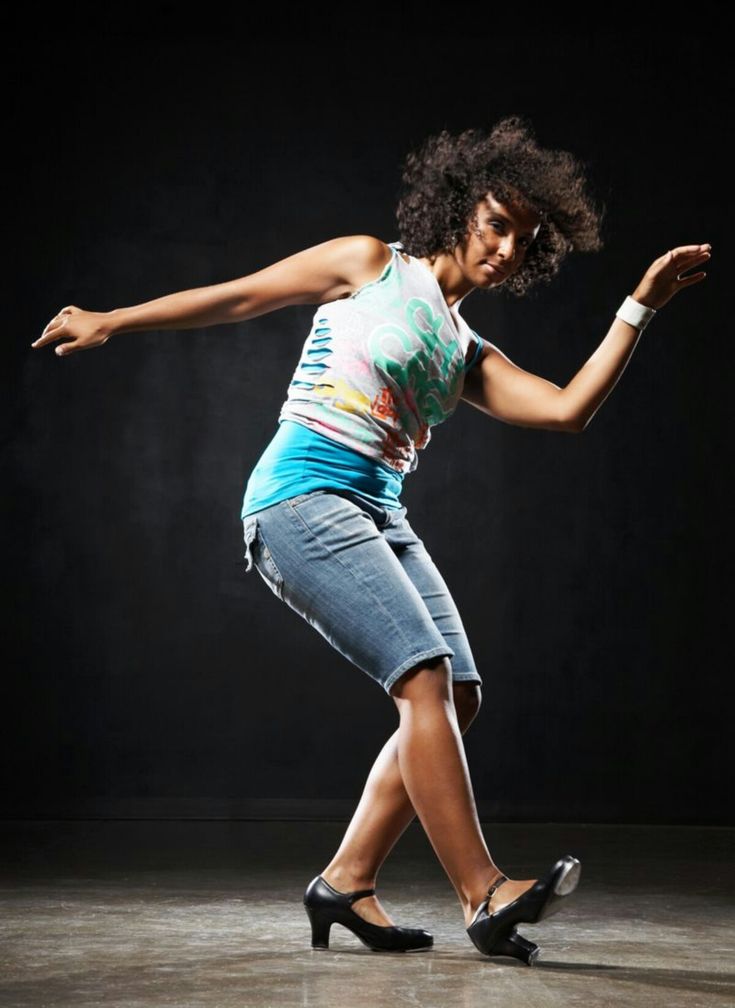 The moment when we approached Inna, I remember as vividly as if it were yesterday.” Inna today recalls that when she accepted Taisiya into the team, she became the youngest member - and, as it became clear later, one of the best.
The moment when we approached Inna, I remember as vividly as if it were yesterday.” Inna today recalls that when she accepted Taisiya into the team, she became the youngest member - and, as it became clear later, one of the best.
According to Inna, the team led by her constantly grew, and at some point even reached a record number of fifteen people. Today, the youngest member of the team is 16 years old, the oldest is 34.
But the older the performers become, the more difficult it is to get them to classes - as they grow older, they have new interests and new obligations. Therefore, the composition is constantly changing. Some leave - and forever.
Even today, at a lesson in a Karaite school, I notice that in a pair dance one of the dancers has to do without a partner. “The girl could not stand it, she left in the fall, she said that there was not enough time,” Inna explains. Not everyone lives in Trakai, many have to travel from Vilnius after work or study.
But it still happens that someone leaves, but then still comes back.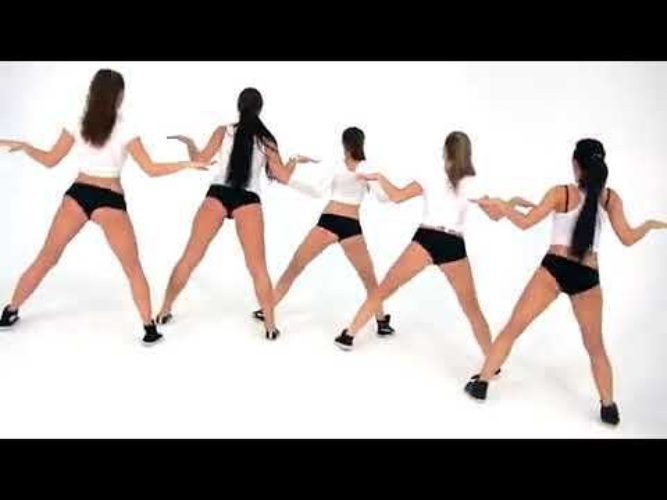 "One boy left for a year, then returned. And it turned out that he came to us for the New Year's holiday, and I just prepared a video: I collected stories over the past eight years - how they grew up, where they were, what they did and where They were interested, because everyone had already forgotten. He, together with everyone, looked, apparently moved, and went on stage. And he told me: I will come to the lessons, "recalls Inna.
"One boy left for a year, then returned. And it turned out that he came to us for the New Year's holiday, and I just prepared a video: I collected stories over the past eight years - how they grew up, where they were, what they did and where They were interested, because everyone had already forgotten. He, together with everyone, looked, apparently moved, and went on stage. And he told me: I will come to the lessons, "recalls Inna.
© Birlik
"Here everyone is either a friend or a relative"
Taisia, despite her studies in the last grade of school, says that she is happy to come to classes in Trakai once a week: "During the dance, you can throw out your emotions, feel free, change the scenery, forget about school and go into our little world."
For Taya, this is not just a world of dance. Every visit to Trakai is a meeting with family and relatives. Even in the team, according to her, everyone can be called both a friend and a relative: "We are like one big family. The whole ensemble is close and distant relatives, everyone knows each other from early childhood, everyone knows each other's parents."
The whole ensemble is close and distant relatives, everyone knows each other from early childhood, everyone knows each other's parents."
© DELFI / Orestas Gurevičius
Taya says that she loves to come to Trakai, and when there are no dance lessons: "It's her hometown, with beautiful nature, lakes around. Here I can be with myself. You come to Trakai just to hang out with friends , and constantly greet people on the street. Friends are surprised, and I explain: this is my uncle, this is my aunt, along one line, along the other line. And here is the square named after my great-grandfather Semyon Firkovich [Firkovich Semyon ( 1897-1982) - Karaite poet, religious leader of the Lithuanian Karaites, senior priest of kenesa in Trakai from 1920 to 1982 - approx. author. ]".
Taisiya is connected with Trakai by another important achievement for her. Taya admits that, being herself from a Russian-speaking Karaite family, she spoke Lithuanian poorly. In fact, I already learned it here, in Trakai, when I met a Lithuanian-speaking Karaite girl.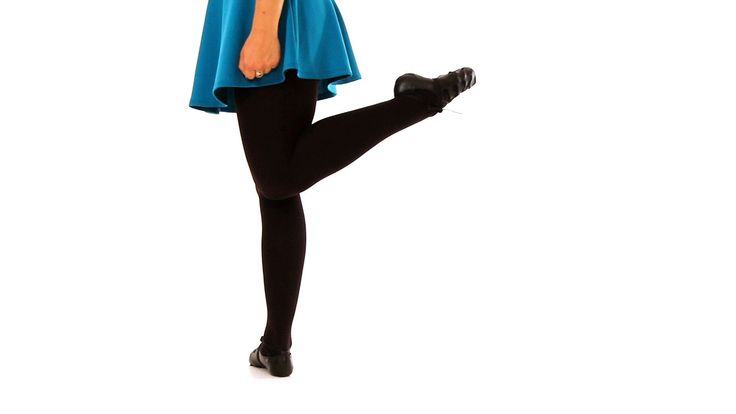 Communicating with her, I improved my Lithuanian".
Communicating with her, I improved my Lithuanian".
"Fate brought us together"
After the lesson, the performers spend almost ten minutes trying to agree on the day and time of the next lesson with Katerina Voropai, the choreographer of "Birlik". Katerina is known to a wide audience in Lithuania as a participant project "Dance with a Star" ("Šok su žvaigžde"). When asked how she ended up in the "Birlik" team, she answers briefly and succinctly: "Fate brought us together."0003
Paulius Šinkūnas ir Katerina Voropaj
© DELFI / Tomas Vinickas
Inna explains that it was difficult for the first teacher to work with children: "Each child said something, wanted to show something, wanted to be noticed. We started looking for another teacher, and found Katerina. She has been with us since 2013."
Katerina admits that it was also not easy for her at the beginning - after all, becoming a choreographer in a national dance group, especially one belonging to a rare culture, is not an easy task.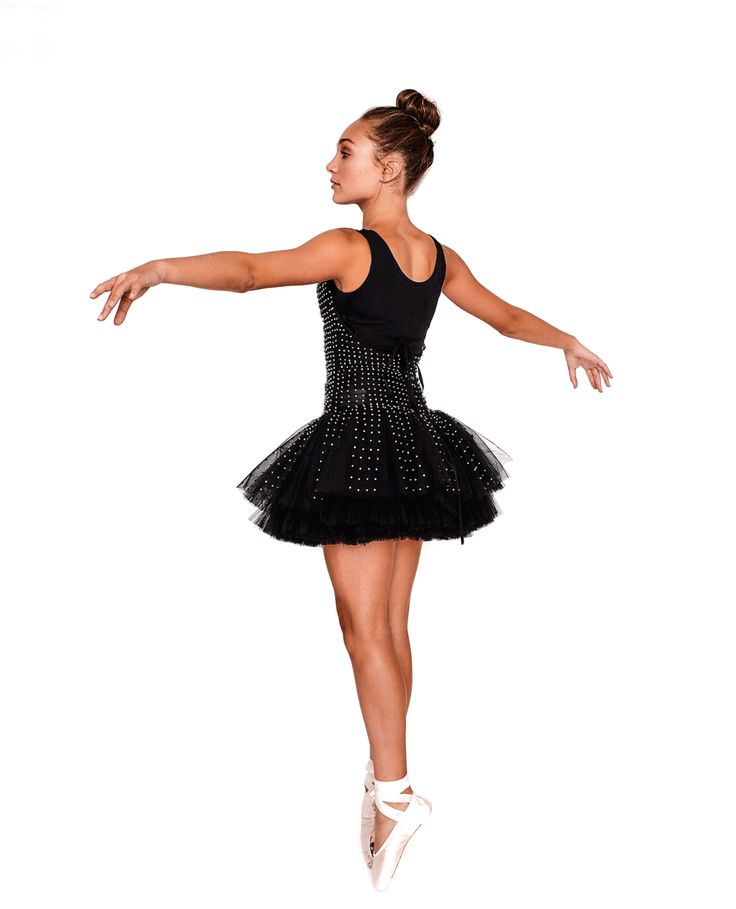 “I love challenges,” she admits with a smile. “Of course, I was worried at the beginning, but Inna provided me with all the materials. I studied them for a long time and thoroughly. Everything here was new for me. the style of movement for girls and boys is completely different. Moreover, I have danced ballroom dances all my life - there is nowhere without a hand. And in the Karaite dance, partners never join hands."
“I love challenges,” she admits with a smile. “Of course, I was worried at the beginning, but Inna provided me with all the materials. I studied them for a long time and thoroughly. Everything here was new for me. the style of movement for girls and boys is completely different. Moreover, I have danced ballroom dances all my life - there is nowhere without a hand. And in the Karaite dance, partners never join hands."
“They seem to be together – with their eyes and feelings, but not with their hands,” Inna explains this feature of the Karaite dance. “You express all emotions with your movements. women".
© DELFI
"To simplify, we can say that women swim like swans, and men are warlike, they are protectors. Modesty is intertwined with courage and strength," adds Katerina. According to her, conversations about how girls and boys should behave in dance are an important and regular part of the classes.
"Even if we're just standing, we need to be self-confident.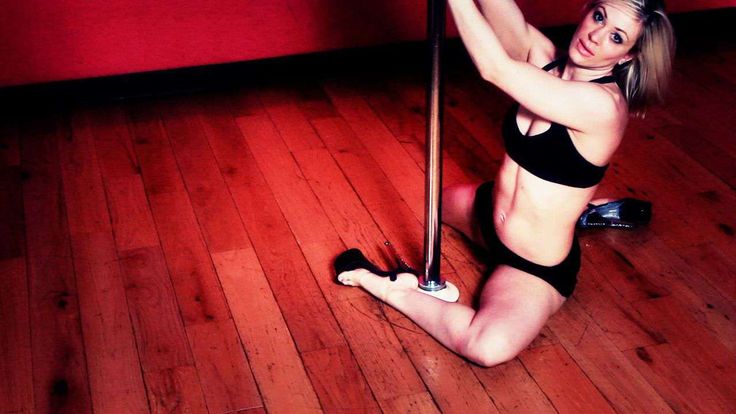 The wider a man spreads his legs, the more confident he looks," Katerina shares her experience. But at the same time, there must be modesty and a "secret". These are downcast eyes, a tilt of the chin. Femininity, but not vulgarity. "
The wider a man spreads his legs, the more confident he looks," Katerina shares her experience. But at the same time, there must be modesty and a "secret". These are downcast eyes, a tilt of the chin. Femininity, but not vulgarity. "
We dance and go back centuries
Taisiya feels that through every dance they dance, they live their story. "The viewer, probably, does not always understand what we show in the dance, but on the other hand, we mentally always return to those times when men went to war, and girls saw them off. And now we are trying to convey this through dance."
© Scanpix
Taisia says that she felt this especially keenly when Birlik was invited to Ukraine in 2019. They performed in Melitopol and Lutsk, where there is also a Karaite community. "There we experienced our history in a completely different way, because we were very close to the Crimea, to the place from which we were brought many centuries ago."
Taya would very much like to go to the Crimea, but as long as it is illegally annexed by Russia, tours there are impossible.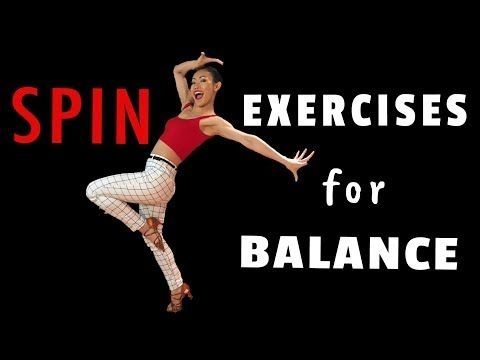 While the team often performs in Poland, I was in Turkey. Taya hopes that they will be invited to Europe more often, so that as many people as possible learn about the Karaites: “Very often, when I meet people, we start talking about nationality. I ask, do you know who the Karaites are? "Even living in Lithuania, they don't know who we are. It's especially insulting when kibins (Taya calls them in the Karaite manner - kybyn) are simply considered a local meat pie."
While the team often performs in Poland, I was in Turkey. Taya hopes that they will be invited to Europe more often, so that as many people as possible learn about the Karaites: “Very often, when I meet people, we start talking about nationality. I ask, do you know who the Karaites are? "Even living in Lithuania, they don't know who we are. It's especially insulting when kibins (Taya calls them in the Karaite manner - kybyn) are simply considered a local meat pie."
A dance with a twist
I ask Taya to name her favorite dance. She, without hesitation, immediately answers: the dance of the girls "Handkerchiefs". "He is the most gentle and feminine, especially when we dance in costumes, our dresses are spinning…".
© Ensemble Archive
As a choreographer, it's hard for Katerina to choose. On the one hand, according to her, all the dances are dear to her, "each of them is like a child." At the same time, they are all different, just like the music: each dance has its own zest, says Katerina.

